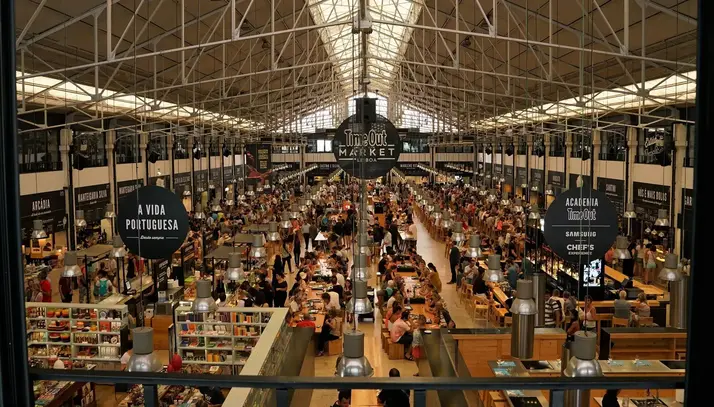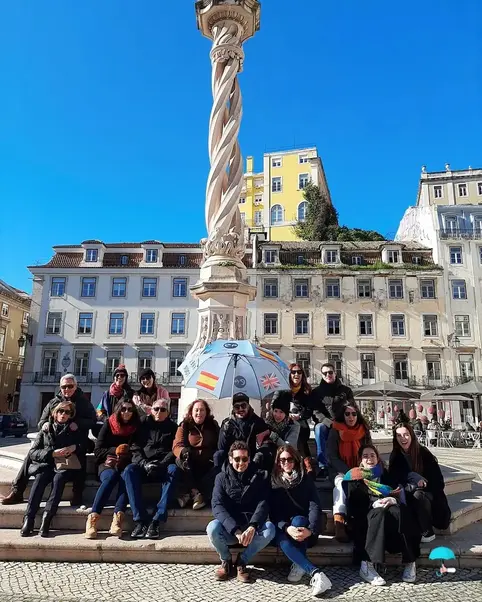









Free Tour Lisboa Bohemia; el apogeo en pleno siglo XX
Descripción del tour
Preparad@ para conocer el s. XX portugués como nunca nadie antes te lo ha contado?
Nos encontraremos a las 10:30 horas, y comenzaremos nuestro recorrido desde la Plaza del Comercio, situada sobre el lugar que ocupaba el Palacio Real antes del terremoto de 1755.
Desde la plaza más importante de la ciudad caminaremos hasta el Ayuntamiento, y admirando su fachada podremos conocer desde una nueva perspectiva el último periodo de la monarquía portuguesa y el famoso regicidio de Lisboa que dió paso a la Primera República portuguesa.
La II Guerra Mundial será un tema muy presente en nuestro recorrido, sobre todo cuando paseemos por el emblemático Largo de Corpo Santo, el Largo de Sao Paulo y la famosa Calle Rosa.
En esta última descubriremos las historias de los espías que habitaron Lisboa durante la contienda y entenderemos el oculto pasado portugués en relación al oro nazi que entró en este país durante la Guerra ¡Será como volver a 1942!
Cambiaremos la historia por gastronomía en el Mercado da Ribeira, también conocido popularmente como Time out, donde se os hará la "boca agua" por los pasillos repletos de puestos con los productos más típicos de delicias portuguesas.
Continuaremos nuestro paseo para sacar la panorámica de la calle más fotografiada de Lisboa. Disfrutaremos la vista del Elevador da Bica, uno de los funiculares más antiguos de la ciudad. Nos sentiremos como locales mientras vemos cómo asciende lentamente entre las antiguas casas de la Rua da Bica en dirección al Barrio Alto.
Ya en el vanguardista Barrio Alto, y mientras caminamos por sus calles llenas de tiendas y bares, hablaremos del desarrollo histórico y urbanístico de la ciudad hasta llegar al Mirador de San Pedro de Alcántara, desde el que podremos disfrutar de una de las mejores vistas de la ciudad: el barrio de Alfama, el Castillo de San Jorge y el Tajo quedarán a nuestros pies.
Entre pequeñas plazas y callejuelas estrechas llegaremos a la Iglesia de San Roque, una ermita barroca construida en el año 1506. Al salir, caminaremos por el Largo da Trindade, donde podremos admirar el espectáculo de azulejos que forman sus fachadas y conocer la ubicación de la Cervecería más antigua de la ciudad y el restaurante de uno de los chefs estrella Michelín más conocidos de Portugal
¡Un recorrido lleno de color y sabor!
Nos detendremos en la Plaza Luis de Camões, y cuando la crucemos habremos dejado atrás el Barrio Alto para recorrer las bohemias calles de Chiado. Se trata de un barrio alegre en el que podremos perdernos entre los cafés y librerías desenfadadas que llenan sus calles. Café a Brasileira y Livreria Bertrand no te dejarán indiferente
Caminando entre edificios del siglo XVIII llegaremos a nuestra última parada: el Teatro y la Ópera de San Carlos, construidos en 1792 sobre una antigua ópera.
El tour se realiza con un mínimo de 4 personas
Busca el Paraguas Azul claro en Plaza de Comercio
¿Qué veremos en este tour?


 Guru:
Guru:












